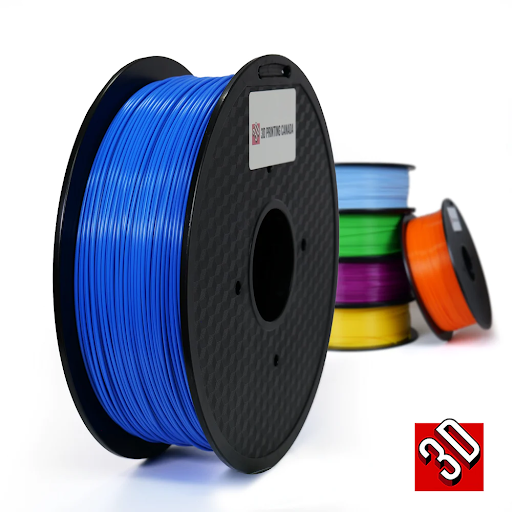In the dynamic realm of 3D printing, the choice of filament plays a pivotal role in achieving optimal results. Polylactic Acid, commonly known as PLA, stands out as one of the most popular and versatile filaments in the 3D printing community. This guide explores the fascinating world of PLA filament, delving into its properties, applications, and the impact it has had on the expansive field of additive manufacturing.
What is PLA Filament?
PLA is a biodegradable and bioactive thermoplastic derived from renewable resources, such as corn starch or sugarcane. Its eco-friendly nature has contributed to its widespread adoption, making it a preferred choice for environmentally conscious 3D printing enthusiasts.
2. Properties of PLA
PLA boasts a combination of favourable properties, including ease of use, low odour during printing, and minimal warping. It is available in a variety of colours and exhibits a glossy finish, enhancing the aesthetic appeal of printed objects. PLA is also characterized by its lower melting point compared to other filaments, making it suitable for printers with limited temperature ranges.
3. Ease of Printing
PLA’s user-friendly nature extends to its ease of printing. It adheres well to build surfaces and does not require a heated print bed. Its low printing temperature reduces the risk of overheating, making it an excellent choice for beginners entering the world of 3D printing.
4. Versatility in Applications
PLA filament finds application in a diverse range of industries and projects. From prototyping and educational endeavours to intricate artistic creations, PLA’s versatility makes it suitable for an array of applications. Its ability to capture fine details and produce smooth surfaces adds to its appeal for various projects.
5. Biodegradability and Sustainability
PLA’s environmentally friendly composition allows for biodegradation under specific conditions, reducing the environmental impact of 3D-printed objects. As a renewable resource-based filament, PLA aligns with sustainable practices, making it a preferred choice for those aiming to minimize their ecological footprint.
6. Color Variety
PLA filament is available in an extensive range of colours, allowing for creative freedom in 3D printing projects. Whether creating vibrant prototypes, artistic designs, or functional objects, the colour variety of PLA contributes to the aesthetic diversity of the final prints.
7. Post-Processing Ease
PLA filament offers ease in post-processing, enabling users to refine and polish their 3D prints effortlessly. Sanding, painting, or applying various finishes can be seamlessly executed on PLA prints, providing ample room for customization and refinement.
8. Considerations for Usage
While PLA boasts numerous advantages, certain considerations should be taken into account. Its lower temperature resistance makes it less suitable for applications exposed to high temperatures. Additionally, its biodegradability may limit its use in objects meant for prolonged outdoor exposure.
9. Future Innovations
The ongoing advancements in 3D printing technology continue to influence the development of PLA filaments. Innovations include enhanced blends, incorporating additives for improved strength, flexibility, and other specialized properties. These advancements further solidify PLA’s position as a leading filament in the ever-evolving world of additive manufacturing.
10. Storage and Shelf Life
Proper storage is essential for maintaining the quality of PLA filament. It is advisable to store PLA in a cool, dry place, away from direct sunlight, to prevent moisture absorption. PLA’s sensitivity to moisture can affect print quality, causing issues like stringing and poor layer adhesion. Additionally, while PLA filament has a relatively long shelf life compared to some other filaments, it is recommended to use it within a year of purchase for optimal results.
PLA filament’s popularity extends beyond professional applications, with a thriving community engaged in do-it-yourself (DIY) projects. From hobbyists crafting intricate models to educators utilizing 3D printing in the classroom, PLA’s accessibility and affordability have democratized the world of 3D printing. The wealth of online resources and forums dedicated to PLA printing techniques and troubleshooting further fosters collaboration and knowledge-sharing within the vibrant 3D printing community.
Conclusion
PLA filament is a beacon of innovation and sustainability in the 3D printing landscape. Its user-friendly properties, versatility, and eco-friendly composition make it an ideal choice for a myriad of applications, from prototyping to artistic creations. As the 3D printing community continues to push boundaries, PLA filament remains a steadfast companion, contributing to the transformative and dynamic nature of additive manufacturing.

